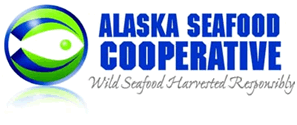What is the Alaska Seafood Cooperative?
Formed in 2008, the Alaska Seafood Cooperative (AKSC), formerly the Best Use Cooperative, is a group of “catcher processor” fishing companies interested in working to improve the management of Bering Sea flatfish and other non-pollock groundfish fisheries.
What species are involved?
AKSC fisheries include many species of sole and flounders including yellowfin sole, rock sole, rex sole, flathead sole, arrowtooth flounder and Alaska plaice. Other non-pollock fisheries include Atka mackerel, Pacific cod, and Pacific Ocean Perch. All AKSC members depend on these species to varying degrees.
How are they caught?
AKSC members operate catcher-processors of 110 to 295 feet that have equipment on board to process and freeze catch. By raising trawl sweeps off the bottom, Bering Sea flatfish gear reduces bottom impacts by 90%. This gear will be required for Bering Sea flatfish fishing in 2011 and used voluntarily in the Gulf of Alaska.
How is the fishery managed?
AKSC fisheries are managed by strict, science-based standards and are recognized as among the best managed in the world. Catches are held at or below scientific limits, none of these stocks are overfished, and fishing is strictly regulated to prevent excessive bycatch of other species.
What is being done to reduce the catch of non-target species (bycatch)?
Bycatch reduction is a major priority for fishers and fishery managers. Limits are placed on the incidental catch of species like halibut and crab. Once these limits are reached, fisheries are closed. Observers closely monitor bycatch levels and fishermen share this information (through the fleet’s Sea State Program) to identify and avoid bycatch “hotspots.” Our members have worked with scientists and net designers to modify their nets to reduce the halibut bycatch in some fisheries.
What's new with the way the fishery is being managed?
Since its inception, AKSC has worked with the North Pacific Fishery Management Council to develop an alternative to end the current “race for fish.” This new system (Amendment 80) went into effect in 2008 and divided groundfish target quotas and bycatch limits among cooperatives like the AKSC. This new management system makes each group responsible for its own catch and bycatch as well as provides strong incentive for the co-ops to keep bycatch rates low, maximize retention of groundfish, and reward those who fish cleanly and efficiently.
What else is being done to improve management?
At industry expense, observer coverage aboard AKSC vessels has been doubled and new flow scales accurately determine catch amounts. Additionally, AKSC is engaged with NMFS scientists and managers on several projects to improve management, including exploring alternative halibut and crab accounting methods to reduce mortality rates.
Why did the Cooperative seek Marine Stewardship Council (MSC) certification?
Given the recent steps to improve their fishery, AKSC was eager to be evaluated by the MSC. This involved a close look at the fishery through a transparent and systematic process and applied scientific principles to assess stock assessment methodologies, measures to mitigate the environmental effects on target and bycatch species, and fishery effects to the ecosystem. MSC certification will distinguish flatfish fisheries off Alaska from other flatfish fisheries around the world.
What companies are members of the AKSC?
The AKSC comprises most companies involved in the Bering Sea flatfish fishery. They include Fishermen’s Finest, Inc., North Star Fishing Co, Ocean Peace, O’Hara Corporation and United States Seafoods.
